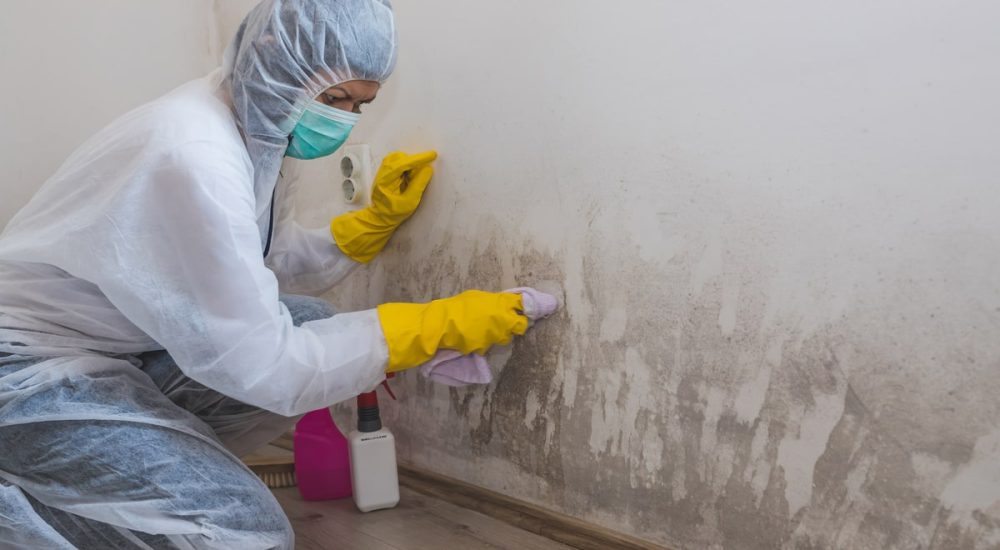
The Different Types Of Mold And Mold
Remediation Processes
The Different Types Of Mold And Mold
Remediation Processes
Mold is a common household nuisance that thrives in damp and humid environments. This fungus reproduces via minuscule spores, often invisible to the human eye. Mold spores are everywhere but become problematic when they find suitable conditions to grow and multiply in your home.
Mold remediation is crucial for several reasons: Primarily, mold can inflict considerable harm on your property, causing structural complications and reducing its value. Moreover, mold can present significant threats to your health, most significantly to people with breathing issues or weakened immune systems. It can provoke allergic reactions, induce asthma attacks, and elicit other respiratory effects.
Mold can take hold in various areas of your home, especially moisture-prone. Typical regions for mold infestation encompass basements, bathrooms, kitchens, crawl spaces, and areas impacted by water leaks or flooding. Identifying these problem areas is essential for effective mold remediation and prevention.
This blog article will provide valuable insights into identifying mold types, understanding their specific remediation requirements, and the importance of seeking professional assistance. Don’t let mold damage your home or compromise your well-being; let Jurassic Mold be your reliable partner in mold remediation.
Recognizing The Different Types Of Mold
In the world of mold, knowledge is power. Grasping the various kinds of mold that can invade your home is vital for successful remediation.
A. Analyzing The Different Types Of Mold
Mold comes in various species, each with unique characteristics and remediation requirements.”Typical types of mold found in households include Aspergillus, Penicillium, Cladosporium, and Alternaria.” These molds can appear in different colors, textures, and growth patterns, making it essential to identify them for targeted remediation properly.
B. Identifying Black Mold — The Most Dangerous Type
Black mold, scientifically known as Stachybotrys chartarum, is one of the most concerning decay due to its potential health risks. It usually exhibits a slick texture and a greenish-black hue. Black mold flourishes in zones with abundant moisture and organic matter, like water-damaged structures or flood-affected homes.
Making a Jurassic Difference
Request a reliable, professional inspection and indoor quality test.
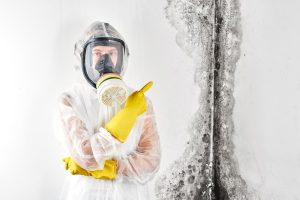
It releases mycotoxins that can cause severe respiratory problems and other health issues. If you think there’s black mold in your home, it’s crucial to contact a mold remediation professional right away.
C. The Prevalence Of Surface Mold Within The Home
Surface mold refers to mold growth visible on walls, ceilings, or other surfaces. It commonly appears as fuzzy patches, discoloration, or stains. Although surface mold is usually less harmful than hidden mold, it can still cause harm to the materials it affects and decrease the quality of indoor air. Addressing surface mold promptly is essential to prevent further spread and potential health issues.
D. Recognizing The Signs Of A Mold Problem
Spotting the signs of a mold problem early can save you from significant headaches. Look for musty odors, water stains, peeling wallpaper, warped surfaces, or unexplained allergic reactions. If you notice any of these indicators, it’s crucial to take action and consult a professional mold remediation company like Jurassic Mold.
Types Of Household Mold — Evaluation
The presence of mold in a home is a significant issue, as it can grow in many places, cause substantial health issues, and the longer it’s allowed to survive, the more damage it can cause.
Cladosporium
A frequently encountered mold in homes is Cladosporium. It requires minimal conditions to thrive and can swiftly multiply, particularly in environments ideal for mold growth.
The health risks associated with Cladosporium exposure make it crucial to treat mold as soon as it’s identified. Professional mold remediation companies offer comprehensive mold removal services, ensuring the mold is removed completely, thereby preventing further mold growth. The remediation process entails identifying and addressing the mold’s source, eliminating impacted areas, cleaning up the mold, and maintaining a mold-free setting.
It’s crucial to understand that handling a substantial amount of mold or mold within an HVAC system is generally more expensive than dealing with surface mold or smaller mold areas due to the intricacy of the removal and remediation work.
No pressure, No hassles
We’re licensed, insured, certified, and 100% focused on mold and air quality
Penicillium — Another Common Household Mold
Penicillium is one of the many types of mold frequently found in homes.
This mold doesn’t need much to establish itself, and mold growth can occur in various locations within the home, provided that the environment is suitable. Penicillium mold is often found in damp or water-damaged areas and could become a persistent mold issue if not addressed promptly.
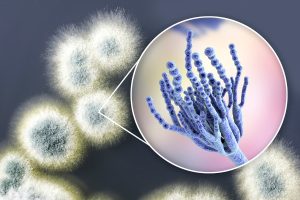
To stop mold from spreading, it’s crucial to eliminate it as soon as it’s noticed. The health risks Penicillium poses make it necessary to treat mold urgently. Professional mold remediation services provide thorough mold removal and remediation solutions, guaranteeing complete mold elimination and prevention of recurrence.
Hiring a professional mold removal expert skilled in handling various mold types, like Penicillium, black mold, and white mold, is recommended. The remediation process typically includes identifying the mold’s source, cleaning up the mold, and ensuring a secure, mold-free environment. Although average mold remediation expenses can range from a few hundred to thousands of dollars based on mold growth extent, professional mold remediation is crucial for eradicating mold and stopping its return.
Aspergillus: A Hazardous Household Mold
Out of the various mold types that can invade homes, Aspergillus is notable because of the health risks linked to it. This mold can be found in various environments within the home, particularly those with moisture issues.
Detecting Aspergillus
Knowing the mold’s location is key for successful remediation. Aspergillus usually grows in moist areas and can spread rapidly if not addressed immediately. The mold can grow on various surfaces and is frequently found within HVAC systems.
Health Risks
Exposure to Aspergillus, similar to various mold types, can cause health problems. So, it’s essential to eliminate mold as soon as it’s found. To guarantee mold doesn’t return, the remediation process should include identifying the mold’s source and applying effective cleaning techniques to exterminate the mold. This process also includes steps to prevent future growth of mold. Hiring a professional mold remediation company is crucial, as they specialize in these processes.
The Mold Remediation Process: A Detailed Look
In terms of mold remediation, a thorough approach is crucial in guaranteeing a mold-free home; we’ll explore the detailed steps involved in the remediation process.
Mold Remediation And Removal: An Overview
Mold remediation identifies, contains, and eliminates mold growth within a property. It involves thorough cleaning, sanitization, and implementing preventive measures to prevent future mold issues. Professional mold remediation companies have the expertise and equipment to handle mold problems effectively.
How Professionals Handle Mold Cleanup
When you hire a professional mold remediation service, they follow a systematic approach to tackle mold issues. The process typically includes:
Inspection and Assessment: A detailed evaluation of the impacted areas is carried out to assess the mold problem’s severity and scope. This step helps in devising an appropriate remediation plan.
Containment: To prevent the spread of mold spores, professionals establish containment barriers using plastic sheeting and negative air pressure systems. This ensures that mold doesn’t contaminate other areas during the removal process.
Mold Removal and Cleaning: Materials affected by mold, such as drywall, carpets, or insulation, are meticulously removed and discarded. The remaining surfaces are meticulously cleaned using specialized techniques and antimicrobial solutions to remove mold.
Drying And Dehumidification: Thorough drying of the affected areas is crucial to prevent mold from returning. Dehumidifiers and drying equipment reduce moisture levels and create an environment inhospitable to mold growth.
Restoration: The affected areas are restored to their pre-mold condition once the mold remediation is complete. This may include repairing or replacing damaged materials.
The Role Of Professional Mold Remediation In Ensuring A Mold-Free Home
Professional mold remediation is vital in effectively addressing mold problems. Certified mold remediation specialists possess the skills to manage mold elimination’s complexities, ensuring all mold traces are removed. They also use sophisticated methods and tools to hinder cross-contamination and reduce the risk of future mold proliferation.
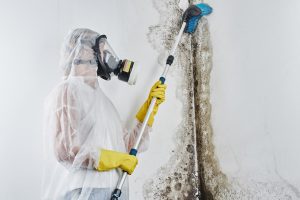
By hiring professionals, you can know that your home is being thoroughly treated and the mold issue is being addressed at its root cause. They possess the knowledge and experience to customize the remediation process according to the specific mold species and the infestation’s severity.
Why Hire A Professional For Mold Removal And Remediation?
In terms of mold removal and remediation, employing a professional’s services is highly advised. We’ll emphasize the importance of hiring a mold removal professional and the additional advantages they offer.
The Importance Of Professional Mold Removal
Professional mold removal is crucial for several reasons. First and foremost, certified mold remediation specialists have the necessary training and expertise to handle mold problems effectively. They understand the complexities of different mold species and employ targeted strategies to eradicate them.
Moreover, professionals can access specialized equipment and tools that aid in thorough mold removal. This ensures that the visible mold is eliminated and the hidden mold within walls, ceilings, or other concealed areas.
How A Professional Identifies The Type Of Mold
Correctly determining the mold type is vital for effective mold remediation.
Professionals have the knowledge and experience to differentiate between mold species, including potentially harmful black mold. They can determine the specific remediation requirements through proper testing and analysis and tailor their approach accordingly.
Additional Services Offered By Mold Remediation Professionals
Mold remediation professionals offer additional services to ensure comprehensive mold removal and prevention. These services may include:
Moisture Control: Professionals address the underlying cause of mold growth by identifying and resolving moisture issues in your home. This may involve repairing leaks, improving ventilation, or implementing moisture barrier systems.
Air Quality Testing: Qualified professionals can conduct air quality testing to assess indoor air quality and detect lingering mold spores. This helps verify the remediation process’s effectiveness and ensures a mold-free environment.
Prevention Strategies: Mold remediation experts can provide valuable advice and recommendations on preventive measures to minimize the risk of future mold growth. This may involve moisture control strategies, proper ventilation, and routine inspections.
By hiring professionals, you benefit from their expertise in mold removal and access to additional services that contribute to a healthier and mold-free home.
Removing Mold-Infested Materials – House Sanitary Care
In situations where the mold within the home has advanced beyond surface growth, dealing with mold-infected materials becomes a crucial step. Often, the severity of the mold infestation determines the necessity of this step. For instances where dealing with a small area of mold is sufficient, materials removal might not be necessary.
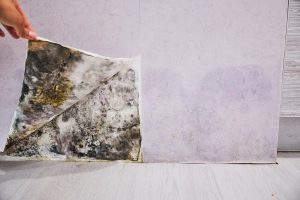
However, when feet of mold growth or overarching dampness has caused the mold to spread across a large extent or different types of mold are involved, the infested materials may need to be removed to ensure the mold doesn’t reroot in the same area.
Final Step Of The Mold Remediation Process – Restoration
After dealing with mold, the final step is Restoration – returning the home to its pre-mold state, and perhaps even better!
Restoration involves repairing or replacing materials affected by mold, like drywall, insulation, and, in severe cases, even structural elements. This approach not only gets rid of the mold but also resolves the issues that prompted its growth, like HVAC system malfunctions or dripping pipes.
Ensuring A Mold-Free Space
The objective is to establish an environment where mold can no longer flourish. The areas of mold within the home are thoroughly cleaned, and new materials are installed. Mold remediation companies often work with contractors to ensure proper restoration. Returning your home to an improved, mold-free condition offers invaluable peace of mind. Hiring a professional ensures the work is complete and effective, making it the best decision when dealing with the aftermath of mold.
Understanding the different types of mold and the processes involved in mold remediation is essential for maintaining both the integrity of your property and the health of its occupants. Mold, while a natural part of our environment, can present substantial problems when it starts growing indoors. This growth, facilitated by moisture and organic material, can lead to property damage and health issues.
The various mold remediation stages, from the initial assessment to property restoration and prevention measures, serve to handle and mitigate the consequences of mold infestation effectively. While some small mold problems can be addressed with a do-it-yourself approach, it’s crucial to seek professional help for larger infestations to ensure that the mold is completely and safely eradicated.
Prevention is always better than cure. Therefore, maintaining a clean, dry, and well-ventilated property is your best defense against mold growth. Regular inspection and immediate repair of leaks, controlling the humidity levels, and keeping an eye out for early signs of mold can save significant time, money, and stress in the long run.
Despite its potential to cause problems, mold shouldn’t be a cause for panic. With the right knowledge and resources, most mold situations can be effectively managed, keeping our homes and workplaces healthy and comfortable. After all, the key to dealing with mold is not just responding when it appears but proactively preventing its growth.
